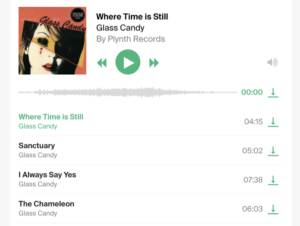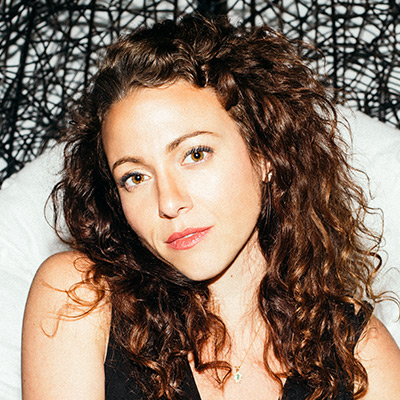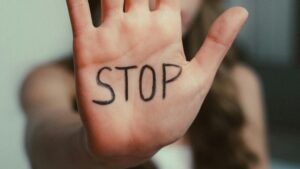by Jess Furman
Oct 27, 2021
Chapters
Chapter 1: Writing A Jingle
Chapter 2: Writing For Ads
Chapter 3: Writing Sync Songs With Production Writers
Chapter 4: Breaking Into Sync Writing
Chapter 5: Can You Re-write Sync Songs?
Chapter 6: How Much Time Do You Get To Write A Sync Song?
Chapter 7: Organizing A Sync Catalog
Chapter 8: Should I Follow Up On A Song?
Chapter 9: Should I Write A Full Song?
Chapter 1: Writing Jingles
If you’re writing a jingle, which means that you’re writing the lyrics and the music, your writing is upfront, and diction is so important.
When writing for an ad or commercial, they give very specific direction as to what lyrics must be included in some form or another. That’s very typical if you’re writing for customer ads.
In sync briefs, as in commercials, usually you get a two or three page workup where there’s references and there’s way too many words to possibly fit into the jingle. You have to learn how to communicate back and figure out which words are essential.
Chapter 2: Writing For Ads
For ads, everything needs to be really clear. People underestimate how much time you need to get the words out in a way that people understand.
If you have the words, “never better, best” for an ad, you’re looking at those words, but you’re also looking at what they are trying to make the listener/viewer feel. So, I would say a good rule of thumb is with words such as “today, now, never better” everything has to be “now” driven. They’re trying to get something across that is happening in the moment and that would be what I would circle the track around or the pitch around, because there’s a sense of urgency. Also earning to write hooky melodies that the listener can grasp right away plays a big role in this context.
Chapter 3: Writing Sync Songs With Production Writers
Being able to understand how to read the briefs and what the words mean and apply them is an incredible skill to have. Especially if you are working with a producer. Helping to translate the words into feeling can help create a winning track/song/jingle.
Chapter 4: Breaking Into Sync Writing
If I’m trying to get in with a new agency, someone that doesn’t really know what I can do, I’ll say, “Hey, give me a spot and let me show you what I can do. Then in that case, the “win” would be obviously, if you get the spot. But a close second for me is if they call me again to do more work. In my monthly Sync Edge Group I teach for SongTown, we work on strategies for approaching music supervisors to get better results.
Chapter 5: Can You Re-write Sync Songs?
If you get a whole page of lyrics and you have a good relationship with a supervisor or that agent, I would say, “Hey, what are the key takeaways here? What is the key thing that you need to know?” Because sometimes there are things that you can repurpose.
For instance, if you did a good job writing to a brief and producing all the tracks, you can maybe take a swing at something else because there might be a theme or certain ads that you can use it for. Sometimes the music supervisor might go back and ask you to reproduce the session for an ad they think it might fit in.
Chapter 6: How Much Time Do You Get To Write A Sync Song?
Keep in mind, typically when writing jingles or other sync music, briefs come in and you have maybe five hours or 24 hours to complete the song. So, you really must learn how to write and produce as fast as possible.
Chapter 7: Organizing A Sync Catalog
I always tag my songs with key words. I have a spreadsheet to keep track because I’m so fast with a lot of these projects that I don’t remember what I sent in, so I try to just tag it. And then at the end of every month, I try to look and see what I think went well.

Chapter 8: Should I Follow Up On A Song?
Usually, no news means no. I don’t always follow up unless it’s a bigger project where I got far along. Then I might just say, “Hey, I was thinking to use this song for something else. Did you guys hard pass on it?”
Then I try to tag the songs that I want to go back to, that I think I can reuse or do something else with.
Chapter 9: Should I Write A Full Song?
I just had a song on Central Park on Apple TV+. We did a quick little verse and chorus sample. They loved what we did. They contracted us to write the full song. Then the full song ended up sounding nothing like what we actually sent them, because they ended up tweaking it so many times.
So, just be mindful that if it’s something like this, there are going to be notes that go back and forth. If you’re in a groove and you want to write more, write more, but if you’re crunched for time, I would just stick to what you have and then kind of move on to the next project.
Check out Jess’s upcoming Online CrashCourse “Writing For Sync: Holiday Edition“
share
Write Better Songs Faster
Songwriting Success is Clay & Marty's 10-day video series that will help you level-up your songs and finish them faster. Enter your email address to get started!



